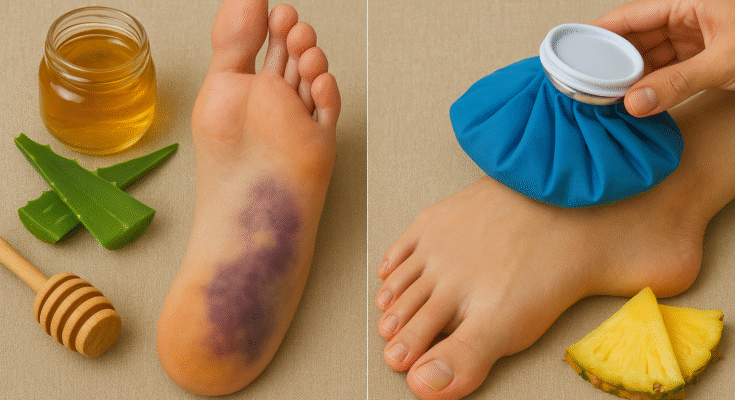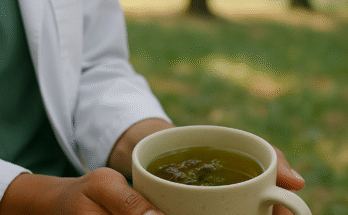Bruise Be Gone: Your Guide to Healing Foot Bruises Naturally
We’ve all been there—stubbing a toe, tripping over a curb, or dropping something heavy on your foot. Suddenly, a purple-blue mark appears, reminding you of the mishap. Foot bruises might seem minor, but they can be stubborn guests. The good news? Most heal on their own, but with the right care, you can speed up recovery and ease discomfort. Let’s dive into simple, science-backed strategies to turn those pesky bruises from “ouch” to “ahh.”
First Aid for Foot Bruises: The 48-Hour Rule
Bruises form when tiny blood vessels under the skin break, leaving a colorful (but unwelcome) mark. While time is the ultimate healer, these steps can fast-track your recovery:
-
Rest Like It’s Your Job
Give your foot a break! Avoid activities that strain it—no marathon running or heavy lifting. Overusing the injured area can worsen swelling and prolong healing. -
Ice It Right
Grab a bag of frozen peas or an ice pack. Apply it for 15–20 minutes every 3–4 hours during the first two days. The cold constricts blood vessels, reducing bleeding under the skin and shrinking the bruise’s size. Pro tip: Wrap the ice in a towel to protect your skin! -
Switch to Warmth After 48 Hours
Once the initial swelling subsides, swap ice for a warm compress. Heat boosts blood flow, flushing away trapped blood and speeding repair. A warm towel or heating pad for 10–15 minutes works wonders. -
Elevate and Compress
Keep your foot propped above heart level when resting—think pillows or a cozy ottoman. This prevents fluid buildup. For extra support, use a compression bandage (but not too tight—you don’t want to cut off circulation!). -
Over-the-Counter Relief
Pop a painkiller like ibuprofen or acetaminophen to dull the ache. Avoid aspirin—it thins blood and could make bruising worse.
Nature’s Pharmacy: DIY Remedies for Faster Healing
Pair medical care with these kitchen staples for a one-two punch against bruises:
-
Honey’s Golden Touch
Slather raw honey on the bruise. Its antioxidants reduce inflammation, while its sticky texture acts like a protective shield. Leave it on for an hour, then rinse. -
Pepper Power
Mix black pepper powder with petroleum jelly to create a spicy paste. Gently massage it into the skin for 5 minutes, let it sit for two hours, then wipe off. The capsaicin in pepper boosts circulation, fading bruises faster. -
Aloe Vera’s Cooling Magic
Break open an aloe leaf (or use store-bought gel) and apply its soothing gel. Aloe hydrates damaged skin and calms inflammation, making it perfect for tender bruises. -
Pineapple’s Secret Weapon
Snack on fresh pineapple or rub its juice on the bruise. It contains bromelain, an enzyme that breaks down blood clots and reduces swelling.
When to Call the Doctor
While most bruises fade within two weeks, some red flags demand professional attention:
-
Bruises appearing without injury.
-
Pain that lingers beyond three days.
-
Swelling that won’t quit.
-
Difficulty moving your foot or walking.
-
Lumps forming near the bruise.
-
Unexplained bruising after starting new medications.
These could signal deeper issues like blood disorders, fractures, or infections. Better safe than sorry!
Prevention Tips: Keep Your Feet Bruise-Free
-
Wear supportive shoes—avoid flimsy flip-flops during high-impact activities.
-
Declutter your space—reduce trip hazards like loose rugs or toys.
-
Strengthen bones with calcium and vitamin D-rich foods (think dairy, leafy greens, and sunlight!).
Bruises tell stories—some dramatic, some clumsy. But with these tips, you’ll be ready to tackle them head-on. Remember, your feet carry you through life; treat them kindly, and they’ll return the favor!





